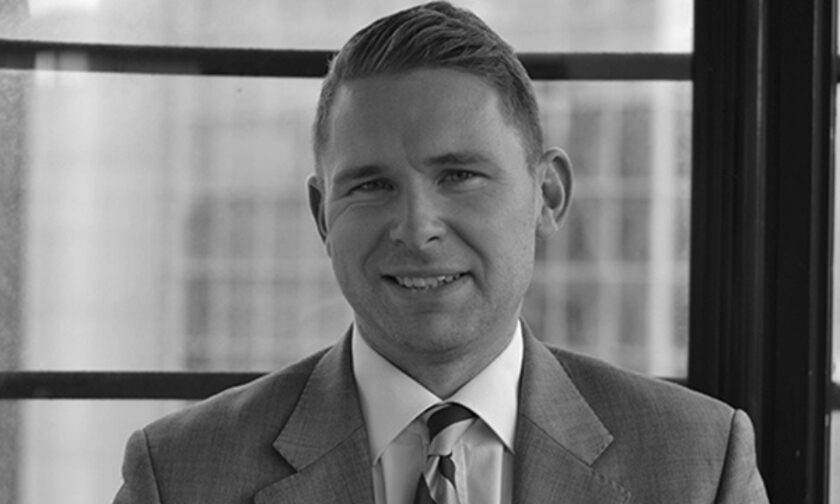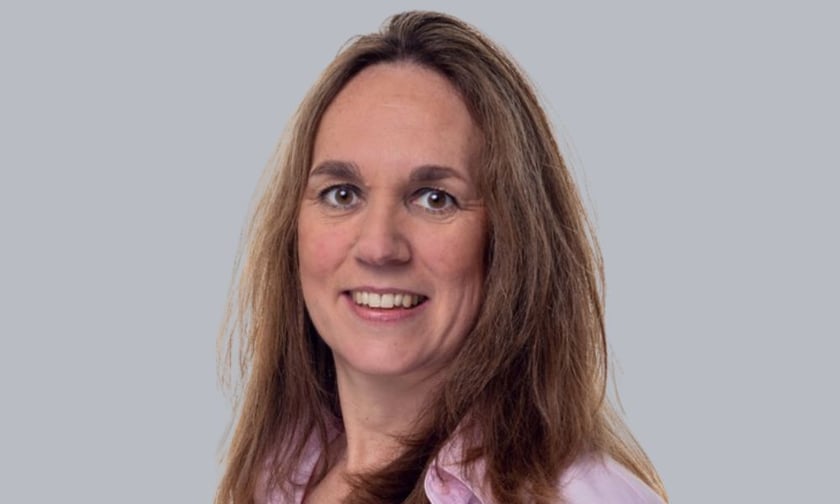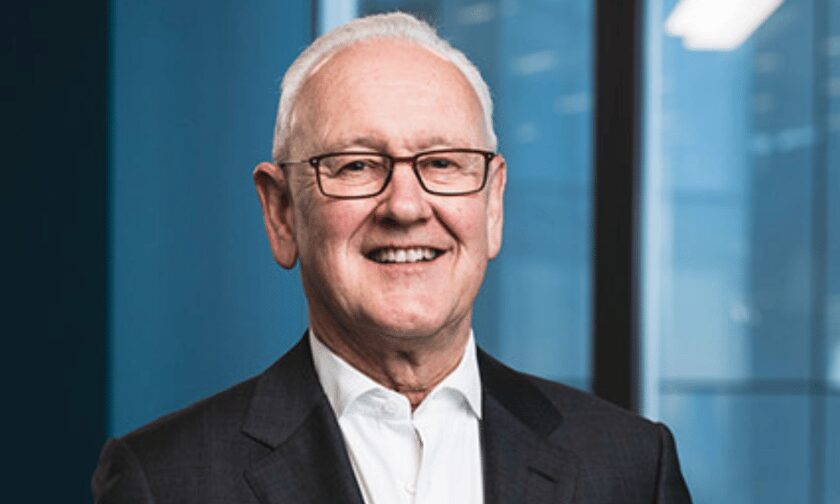
Internal hire takes on new role on top of existing remit

As head, Hipson will oversee the London broking team, which primarily assists Howden UK&I in placing property, casualty, and motor business into the market.
The new role is integral to the company’s strategic growth initiatives, and Hipson will focus on expanding broking operations nationally, fostering relationships with insurer partners, and enhancing support for colleagues to better serve clients.
The London broking remit adds to Hipson’s current duties leading the London corporate existing business team, reflected in his updated title of head of London corporate and broking.
Hipson, whose credentials span nearly 21 years with Howden (including Aston Lark and its predecessor firms), will report to chief placement officer for corporate & commercial Paul Hasib. Prior to his widened function, Hipson led the London corporate existing business team through significant development.
“I’m really excited about this new role and passionate about broking, so I’m looking forward to working more closely with our insurer partners and colleagues to help grow and enhance our broking proposition, focussed always on delivering the best service and solutions for our clients,” he commented.
“There is a talented group of individuals within the existing broking and placement teams who do a fantastic job, and we’ll be building on these strong foundations as we continue this exciting growth journey.”
Meanwhile Hasib remarked: “Paul has a proven track record of achieving great client and management results. This role is perfect for moving those outcomes to the next level.”
Headquartered in the UK, Howden operates in 55 countries and employs 17,000 people. The global business handles £30 billion of premium on behalf of clients.
What do you think about this story? Share your thoughts in the comments below.
Related Stories
Keep up with the latest news and events
Join our mailing list, it’s free!

This page requires JavaScript

Company questions sanctions, says it follows all compliance procedures

Following the UK’s announcement of around 50 new sanctions against Vladimir Putin’s “war machine” last week, Russian insurer Ingosstrakh Insurance Company is looking at the pathways it can take, including possible legal action, to contest its inclusion.
When the sanctions were unveiled, the UK government noted: “New targets include ships in Putin’s shadow fleet, institutions at the heart of Russia’s financial system, and suppliers supporting Russia’s military production.
“These new sanctions, announced while the Prime Minister attends the G7 Leaders Summit in Italy, will bear down on Russia’s ability to fund and equip its war machine and show the UK’s steadfast support for Ukraine.”
Among those sanctioned are suppliers of munitions, machine tools, microelectronics, logistics, or other supplies; entities connected to Russia’s financial system; and groups that operate in or support the Russian liquefied natural gas and civil nuclear sectors.
Ingosstrakh, whose offerings include marine insurance, is the only insurer on the new list. A Bloomberg report highlighted: “Sanctions against Ingosstrakh are notable because it is a major provider of coverage for the commercial fleet moving Russian oil, largely displacing insurers based in the UK and Europe.”
Now Ingosstrakh is said to be working on getting the sanctions lifted.
In an emailed statement to Reuters, the insurer said: “The reasons pertaining to the OFSI (Office of Financial Sanctions Implementation) sanctions upon Ingosstrakh remain unclear to us since Ingosstrakh operates in strict compliance with all applicable legislation and follows all due compliance procedures.
To date, under its Russia sanctions regime, the UK has sanctioned more than 2,000 individuals and entities. Based on 2021 figures, over £20 billion of UK-Russia bilateral trade is now under full or partial sanction.
What do you think about this story? Share your thoughts in the comments below.
Related Stories
Keep up with the latest news and events
Join our mailing list, it’s free!

This page requires JavaScript

Munich Re report surveys the landscape and overall preparedness against natural disasters

Munich Re has released its Climate Risk Preparedness Survey 2023/24, underscoring significant concerns about climate change and its impact on weather-related disasters.
The survey, conducted globally, reveals varying levels of preparedness and perception regarding climate risks among companies, the public, and authorities.
The year 2023 marked the hottest year on record, with extreme temperatures contributing to severe weather events. In both the US and Europe, losses from thunderstorms reached unprecedented levels. Against this backdrop, Munich Re sought to gauge whether different sectors feel prepared for these escalating climate risks.
The survey indicates high levels of concern about climate change, though there is a noticeable gap between concern and willingness to invest in preventive measures. Respondents affected by past weather disasters expressed heightened concern and a greater readiness to invest in loss prevention.
Munich Re notes that these findings highlight areas where additional investment in preventive measures and integration of insurance mechanisms into comprehensive risk management strategies may be needed.
How prepared are businesses to tackle climate risks?
A significant majority (80%) of respondents expressed concern or great concern about the impact of climate change. Conversely, about 20% reported being either not particularly worried or had not considered it.
Regional differences are notable. In emerging economies such as South Africa, Brazil, and India, concern about climate risks is higher compared to developed economies like Japan, Germany, and China. This discrepancy may be due to the higher preparedness and financial resilience of stronger economies.
European countries, generally less exposed to extreme natural disasters, exhibit lower levels of concern. However, 2023 saw record damage from severe thunderstorms in both the US and Europe, often accompanied by tornadoes and hail.
In Japan, despite the country’s vulnerability to natural disasters, strict building regulations and a focus on earthquake risks may contribute to lower expressed concerns about climate change. Japanese respondents tend to prioritize earthquake prevention and risk awareness over weather-related disasters.
Respondents’ concerns about the negative impact of climate change on their companies mirrored their overall concerns. Senior managers (C-level) exhibited more serious worries compared to lower-level employees.
Additionally, concern about climate change’s impact on companies has increased over the past decade, particularly among managerial roles and respondents in emerging countries.
The survey’s findings indicate that pure property damage is not the primary concern for any group or region. Instead, business interruption and loss of revenue are seen as the most serious risks. For top managers, supply chain interruptions also emerge as a significant risk, leading to revenue loss and business disruption.
What are your thoughts on this story? Please feel free to share your comments below.
Keep up with the latest news and events
Join our mailing list, it’s free!

This page requires JavaScript

“Models were off by factors,” CUO says

Global reinsurer Swiss Re has indicated that the insurance industry has significantly underestimated the impact of recent natural disasters in Europe and has raised concerns about some regions becoming uninsurable.
Gianfranco Lot, the group’s chief underwriting officer for property and casualty reinsurance, noted that models were substantially off in predicting the damage from events like the Turkey earthquake, the floods in Germany, and the hailstorms in Italy.
“Whether it’s the Turkey quake… or the floods in Germany or the hailstorms in Italy, models were off by factors as opposed to 10 or 20%,” Lot said to the Financial Times.
In 2023, global insured losses from natural catastrophes surpassed $100 billion for the fourth consecutive year, with $6.2 billion attributed to the Turkey earthquake.
Lot emphasized Swiss Re’s significant investment in improving its natural catastrophe models by incorporating more data. This effort aims to enhance the accuracy of predictions regarding the impact of such events.
Swiss Re identified the underestimation of extreme weather event costs as an industry-wide issue, stemming from inadequate data on current exposure and risk values. The increasing frequency and intensity of extreme weather events, driven by global warming, have escalated costs for the insurance and reinsurance sectors.
Homeowners worldwide are facing higher insurance premiums or struggling to obtain coverage, prompting discussions on the extent of government intervention needed to mitigate climate change costs for consumers. Lot stated that government intervention is necessary and beneficial in high-risk areas that have become uninsurable.
In the United States, the debate over disaster repair costs has been particularly contentious. Some home insurers have withdrawn from high-risk areas, such as parts of California. US home insurers often require local regulatory approval for pricing changes, leading to industry accusations that they cannot keep up with rising claims costs.
A senior executive from the American Property Casualty Insurance Association, Robert Gordon, also noted that government interference has led some US insurers to limit coverage in states frequently affected by natural disasters. Gordon asserted that efforts to prevent steep increases in home insurance costs have critically injured parts of the insurance market.
“That’s where you’re seeing in the US, the markets where you’re having a real availability crisis, it’s because the government is trying to suppress those [premiums],” Gordon said.
What are your thoughts on this story? Please feel free to share your comments below.
Keep up with the latest news and events
Join our mailing list, it’s free!

This page requires JavaScript

Insurance must adapt to new risks

The advent of generative artificial intelligence (gen AI) presents boundless opportunities and new exposures for the global media, film, TV, and entertainment industry.
At least one insurance leader is calling on the industry to adapt its approach to risks posed by the new technology.
Ros Breese (pictured), underwriting director – media, film & TV at Tokio Marine HCC International, said the rapid development of Gen AI has sparked intense discussions within the media insurance industry.
The technology presents a novel set of risks that diverge significantly from traditional content creation methods, spurring concerns about “how and when it’s okay for our clients to be using generative AI to create content, and how insurers can manage and assess that risk,” Breese told Insurance Business.
She said the unique nature of these risks, coupled with the rapidly evolving landscape, has led to a cautious approach to AI and generative AI among media and film companies.
Media, film and entertainment firms exposed
The industry’s cautious stance also comes amid notable legal cases, such as an ongoing New York Times lawsuit against ChatGPT owner Open AI over the use of archival material in generative AI tools.
The US news organization has claimed its copyright was infringed to train models. The lawsuit, which also names Microsoft as a defendant, says the companies must be accountable for billions in damages.
“There’s a nervousness in the media industry about when it’s okay to use AI, whether as a research tool or for content that might be released later,” Breese said. “Everyone has a different take on it. There’s uncertainty about what’s acceptable, especially from an insurance perspective. Will insurers cover claims for content created with generative AI?”
The immense challenge of tracing original content ownership in gen AI material leaves companies vulnerable to IP claims. As generative AI becomes more widely used, the insurance industry will need to adapt its approach to the risks it poses, argued Breese.
“All content is owned by somebody,” she said. “In traditional TV production, there are criteria for clearing rights from writers and third-party content providers. That’s not possible with generative AI.”
Risk management for gen AI risks should involve developing protocols to trace content origins and establishing a chain of responsibility between clients and generative AI tools. Legislative clarity and landmark cases such as the New York Times lawsuit will also play pivotal roles in shaping future insurance strategies.
“I think we’ll probably end up viewing it the same way as other content and working with insurers to mitigate claims. This means recognizing what generative AI is used for and ensuring we can track the original content owner, creating a chain of responsibility between them and the AI tool,” she said. “We’re on a journey.”
Beyond fiction content – how has the media landscape changed since COVID-19?
The highly dynamic risk landscape in media has recently prompted Tokio Marine HCC to launch a global media division dedicated to underwriting risks in the media, film, television, and events sectors.
Beyond the technological challenges, the media consumption landscape itself is shifting, influenced heavily by the pandemic. There’s a marked trend away from traditional production content towards shorter, more digestible formats like podcasts, said Breese.
“As insurers, we’re seeing a lot more podcast material than ever before, particularly in the true crime genre. There’s a significant interest in documentaries using archival footage, as opposed to big-budget dramas,” she observed.
“If you look at streaming services now, there’s a vast portfolio of documentaries available, something we wouldn’t have seen five or ten years ago. We’re seeing a clear trend away from fictional drama towards factual content.”
This trend necessitates a different approach to risk management. Documentary makers, for instance, face unique challenges in securing permissions from individuals appearing in their work and clearing archival footage.
“For a documentary maker, the key is to make sure that they’re getting permission from everybody that’s appearing in that documentary, which can be a bit of a minefield in itself,” Breese said.
The complexity of clearing archival footage and the use of defenses like fair use and fair dealing further complicate the production process. These challenges, Breese said, highlight the need for specialized insurance solutions tailored to the nuances of documentary and factual content production.
Breese advised brokers working with clients in media and film to stay abreast of evolving risks and their clients’ distinct coverage and risk management needs.
“The more open the relationship and the conversation for all parties in the insurance chain the more it helps,” she said.
Do you have something to say about the risks posed by the use of generative AI in the media, film and entertainment industry? Please leave a comment below.
Related Stories
Keep up with the latest news and events
Join our mailing list, it’s free!

This page requires JavaScript

Former Council of Lloyd’s member to support ambitious growth plans

London-based digital risk exchange InsurX has welcomed Canopius founder and former Council of Lloyd’s member Michael Watson (pictured) as non-executive chairman.
Watson, who will be succeeded by Andy Haste as Canopius chair in July, brings significant governance experience to his new role as InsurX advances its technology and widens the company’s workforce to meet growing client demand. As part of its growth plans, InsurX is also expanding into new business classes.
Commenting on his appointment, Watson said: “We have all known for about three decades that London must trade more efficiently, and I have seen lots of different digitalisation initiatives come and go. InsurX is finally delivering the market infrastructure we need to realise the promise of the digital revolution in general, and algorithmic trading specifically.
“I am delighted to support the venture, and I encourage all risk carriers and brokers to explore its offer. InsurX is the perfect solution for the market. It isn’t aligned to a specific insurer or broker and has no aspirations to become one, but it offers those companies an extremely flexible way to extend their distribution or find new capacity. It’s a winner.”
Meanwhile chief executive Gilbert Harrap highlighted the significance of Watson’s arrival, saying: “Our ability to attract a chairman of Michael’s stature illustrates not only the rising importance of algorithmic underwriting in the specialty insurance market but also the potential of InsurX within it.
“That potential is reflected in our growth: at latest count, we have 13 member insurers trading £100 million of capacity, and 20 global Lloyd’s brokers placing risk through our independent exchange.”
Harrap further outlined their ambitious plans for the year amid the growing volume of business traded over the InsurX Exchange.
“We intend – before the year is out – to add new classes of business to our existing functionality to trade contingency and property D&F (direct and facultative),” the CEO said. “Again, that’s ahead of schedule, in response to demand.
“We’ve had to recruit to develop those new capabilities, and to enhance our current offering, and develop our service and support functions as we mature. We’re driving the evolution of better, faster, cheaper risk trading in the specialty insurance market, and it’s happening fast.”
What do you think about this story? Share your thoughts in the comments below.
Related Stories
Keep up with the latest news and events
Join our mailing list, it’s free!

This page requires JavaScript


The top five groups together represented approximately 17.6% of global MGA revenues in 2023. The shares for the top 50, top 100, and top 300 groups were 55.4%, 67.5%, and 84.4%, respectively, reflecting a fragmented yet highly dynamic sector. According to Insuramore, there are around 3,000 enterprises involved in MGA activities worldwide, with over 1,650 projected to write premiums exceeding US$10 million this year.

AM Best delivers the verdict following various market developments

AM Best has revised its outlook for the global reinsurance segment to positive from stable, signaling clear sailing ahead for the industry – but not without its challenges.
In 2023, for the third consecutive year, the global reinsurance segment generated positive underwriting results, with several reinsurers reporting combined ratios below 90%. In 2022, these results were heavily offset by unrealized investment losses in fixed income portfolios, which have since been mostly recouped due to higher reinvestment rates. In 2023, many reinsurers produced return on equity (ROE) exceeding 20%.
According to AM Best, recent improvements in underwriting margins followed a period of disappointing results after significant weather-related losses in 2017, including Hurricanes Harvey, Irma, and Maria. Efforts to reprice and tighten terms and conditions, alongside a reduced appetite for aggregate protection, a focus on named perils, and a shift from proportional to excess of loss covers, contributed to these improvements.
Additionally, several companies have reduced their exposure to natural catastrophe perils, especially in high-frequency layers, leading to more stable underwriting profits.
These profits became evident in 2021 with market hardening, confirmed by the dislocation of the renewal season in early 2023. Cedants and reinsurers realigned their roles, with reinsurers focusing on providing balance sheet protection rather than earnings stabilization.
Exceptional ROEs for 2023 a one-off
AM Best anticipates that the exceptional ROEs seen in 2023 are unlikely to be repeated at such high levels, though reinsurers are expected to maintain underwriting discipline. Despite some signs of deceleration or slight rate softening at the most remote layers of protection, pricing remains robust with limited appetite for higher frequency layers. Tightened terms and conditions are crucial for sustaining and stabilizing technical margins.
Unlike previous hard market cycles, the current cycle is not characterized by a shortage of available capital. Recent negative rating actions on reinsurers have been driven by technical underperformance rather than surplus declines. The best performers continue to expand through oversubscribed capital raises and retained earnings but deploy resources prudently.
Major European players maintain active special dividend and share buyback policies. Investors are more likely to allocate new funds to rated balance sheets with scale and a proven track record, or opportunistically to Insurance Linked Securities (ILS) structures where liquidity is critical.
The end of a period of record-low interest rates has changed the economic landscape, increasing competition for resources between the reinsurance segment and other investment alternatives.
This competition is intensified by the past underperformance of the segment and its perceived volatility, particularly given current climate trends and geopolitical instability. Despite de-risking measures on reinsurance portfolios, it will take time for investors to reduce the risk premium applied to reinsurers.
Reversal of investment losses
Unrealized investment losses in fixed income portfolios, resulting from sharp interest rate increases and reducing global reinsurers’ capital and surplus in 2022, were largely reversed by the end of 2023.
Except for that particular year, dedicated capital for the global reinsurance segment has steadily expanded over the last decade. This recovery might have been more pronounced if not for sizeable dividend distributions by the largest groups.
AM Best’s positive outlook considers the challenges the global reinsurance segment still faces. Heightened natural catastrophic activity, increasing relevance of cyber risks, geopolitical uncertainty, and economic and social inflationary pressures remain crucial topics in the ratings assessment. Global reinsurers have generally leveraged their enterprise risk management frameworks to dynamically adjust strategies to a changing market environment.
Global reinsurers can adapt their business mix and risk profiles to evolving market conditions. Well-diversified organizations can use various strategies to enter and exit particular market segments based on performance expectations.
Examples include the shift away from high-frequency layers in property natural catastrophe coverage, increased caution in writing certain US casualty lines, and the repricing and tightening of terms and conditions to reduce uncertainty linked to unforeseen events such as global pandemics or international armed conflicts.
A key challenge for global reinsurers is balancing prudent capital deployment to support adequately priced risks while maintaining relevance in an increasingly uncertain world due to geopolitical factors, climate trends, and societal or technological changes.
Historically, reinsurers have demonstrated their ability to innovate and refine underwriting tools, as seen with natural catastrophe models and the development of ILS instruments. This trend is expected to continue, given the rising importance of new risks in cyber, secondary perils, and certain casualty lines.
What are your thoughts on this story? Please feel free to share your comments below.
Keep up with the latest news and events
Join our mailing list, it’s free!

This page requires JavaScript

New study challenges widespread beliefs on increasing disaster trends

A recent study suggests that natural and climate-related disasters have been decreasing, challenging the narrative presented by several prominent international agencies. This report aligns with the long-standing assertions of the Global Warming Policy Foundation (GWPF), which has disputed claims of increasing climate disasters.
Organizations such as the UN Office for Disaster Risk Reduction (UNDRR), the Food and Agriculture Organization of the United Nations (FAO), the World Meteorological Organization (WMO), and the International Red Cross (IFRC) have reported a rise in climate-related disasters. However, the GWPF has argued that these reports are misleading, suggesting that technological advancements since the 1970s have led to increased disaster reporting rather than an actual rise in disasters.
The new study by Italian scientists Gianluca Alimonti and Luigi Mariani in Environmental Hazards claimed a declining trend in the number of natural and climate-related disasters in the 21st century. Their analysis of disaster reports since 1900 reveals a significant decline in such events up to 2022.
“The assertion that we are facing an increasing trend of natural disasters, as claimed in the three official reports by UNDRR and FAO on the basis of the same EM-DAT dataset […] is not supported by data,” it said in the study.
The authors emphasized that the empirical data contradicts earlier analyses by the UN bodies, which predict an increasing number of natural disasters and impacts due to global warming: “Our analyses strongly refute this assertion as well as extrapolations published by UNDRR based on this claim.”
The scientists expressed concern over the misrepresentation of natural disaster trends, warning that such claims have been widely disseminated by various media and the FAO. They argued that this misrepresentation can lead to inconsistent policies at both national and international levels, potentially wasting resources or diverting them from more pressing issues.
“The new study by Alimonti and Mariani vindicates what we said in a GWPF report three years ago—climate-related disasters are not on the rise, despite global warming. Claims to the contrary have been made for years by several international agencies. Yet, these agencies failed to recognize that the apparent increase in natural disasters since the 1970s simply reflects a major increase in disaster reporting due to new technology,” said Dr. Ralph Alexander, who is an expert critique of erroneous climate disaster claims.
This is what GWPF director Dr. Benny Peiser had to say.
“There is a famous saying that sums up the GWPF’s efforts to set the record straight on disaster trends and climate disasters: ‘First they ignore you, then they laugh at you, then they fight you, then they join you.’”
Keep up with the latest news and events
Join our mailing list, it’s free!

This page requires JavaScript


